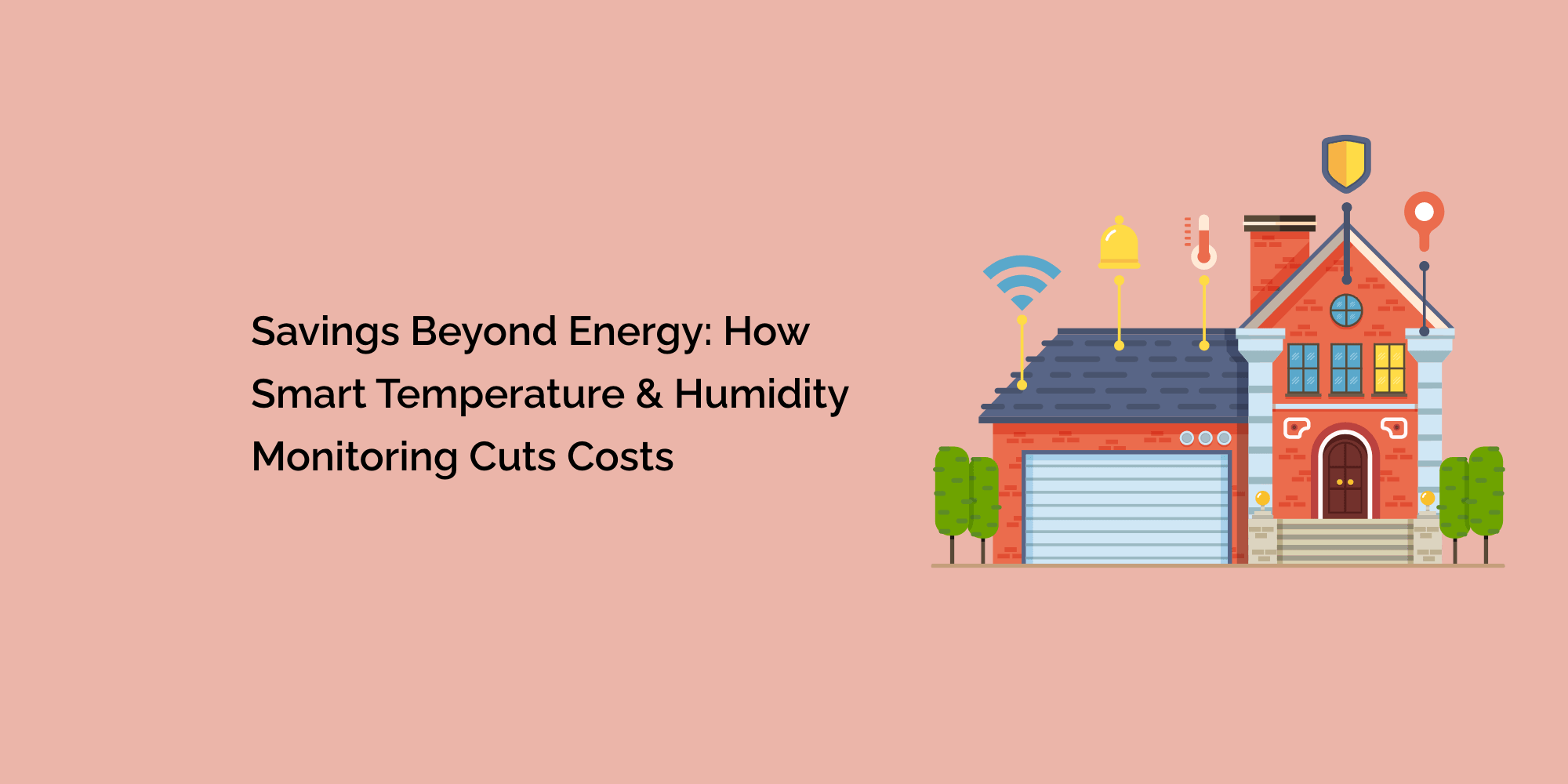In the ever-evolving landscape of smart home technology, the focus on energy efficiency has taken center stage. While the benefits of smart thermostats and energy-efficient appliances are well-known, there's another dimension to consider: the impact of temperature and humidity on both comfort and cost. This blog will delve into the realm of smart temperature and humidity monitoring, exploring how these technologies can lead to substantial savings and enhanced living conditions.
Understanding the Importance of Temperature and Humidity
Before we dive into the world of smart monitoring, it's essential to grasp the significance of temperature and humidity in our living spaces. Temperature influences our comfort, productivity, and overall well-being. Humidity levels, on the other hand, can affect indoor air quality, the growth of mold and bacteria, and the efficiency of heating and cooling systems. Striking the right balance between these factors is not only essential for our comfort but also for maintaining a healthy and cost-effective living environment.
The Role of Smart Temperature Monitoring
Smart temperature monitoring goes beyond basic thermostats. These advanced systems utilize sensors strategically placed throughout your home to monitor temperature variations in real-time. With the data collected, the system can adjust heating and cooling systems efficiently, ensuring that each room maintains the desired temperature without unnecessary energy consumption. This targeted approach eliminates the wastage that can occur with traditional thermostats, which often heat or cool the entire house regardless of occupancy.
Efficiency and Cost Savings
The cost-saving potential of smart temperature monitoring is substantial. By optimizing temperature control based on occupancy and real-time conditions, homeowners can reduce their energy bills significantly. Smart systems can also learn your daily routines and preferences, automatically adjusting temperatures to provide comfort when you need it and conserving energy when you don't. Over time, these adjustments lead to tangible savings while also reducing your carbon footprint.
Humidity Monitoring and Indoor Air Quality
Humidity plays a crucial role in indoor air quality. Excess humidity can lead to mold growth, dust mites, and other allergens, impacting your health and the longevity of your home. On the other hand, low humidity levels can lead to discomfort, dry skin, and even damage to wooden furniture and musical instruments. Smart humidity monitoring systems can detect imbalances and alert you to take corrective action, such as using a humidifier or dehumidifier.
Preventing Health and Structural Issues
Maintaining the right humidity levels can prevent a host of health issues, including respiratory problems and allergies. Moreover, it can protect your home's structural integrity by preventing damage caused by excess moisture. A smart humidity monitoring system can help you strike the perfect balance, ensuring a healthier and more comfortable living environment for you and your family.
Integration with Other Smart Home Devices
Smart temperature and humidity monitoring systems can integrate seamlessly with other smart home devices. For instance, if high humidity levels are detected, the system can communicate with your HVAC system to activate the dehumidifier. Additionally, smart systems can interact with your lighting and blinds, leveraging natural light and shading to regulate temperature and humidity more effectively.
Remote Control and Monitoring
One of the key advantages of smart technology is the ability to monitor and control your home environment remotely. Whether you're at work or on vacation, you can access your smart temperature and humidity monitoring system through a mobile app. This level of control empowers you to make adjustments in real-time, ensuring that your home remains comfortable and cost-efficient, no matter where you are.
Data-Driven Insights
Smart temperature and humidity monitoring systems collect a wealth of data over time. Analyzing this data can provide valuable insights into your home's energy consumption patterns and indoor comfort levels. With this information, you can make informed decisions about your HVAC usage, implement energy-saving strategies, and further optimize your home environment for comfort and cost savings.
Choosing the Right System
As with any smart home technology, choosing the right temperature and humidity monitoring system is crucial. Consider factors such as the number of sensors needed, compatibility with your existing HVAC system, and the level of customization and automation offered by the system. Reading reviews, seeking recommendations, and consulting with experts can help you make an informed decision that aligns with your specific needs.
Conclusion
The era of smart technology extends far beyond energy-efficient light bulbs and remotely controlled thermostats. Smart temperature and humidity monitoring systems offer a holistic approach to indoor comfort and cost savings. By harnessing the power of real-time data and automation, these systems not only enhance our living conditions but also contribute to reduced energy bills and a more sustainable future. As we embrace the potential of these technologies, we move closer to creating homes that are not only smart but also truly optimized for our well-being and the health of our planet.








